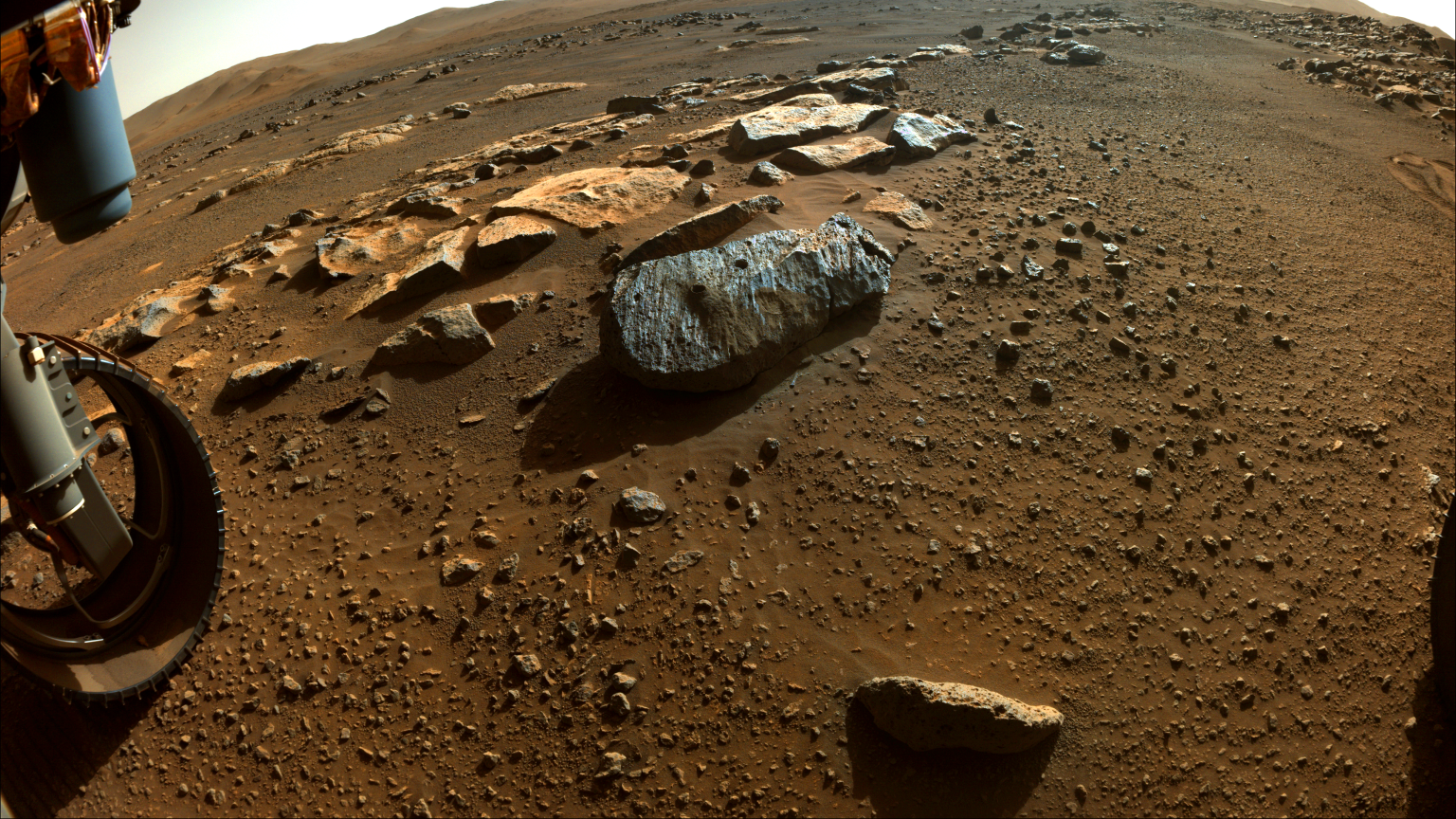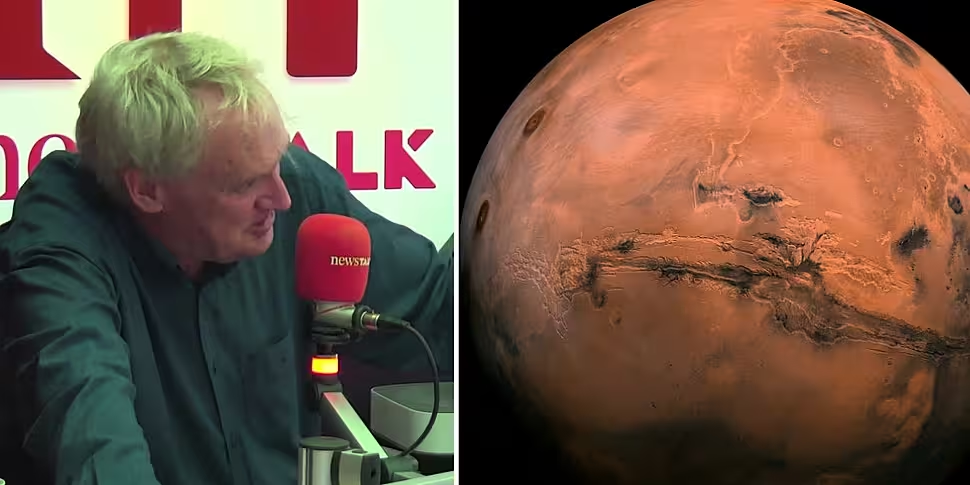The discovery of ‘vast oceans’ of liquid water on Mars means the “three key ingredients for life” exist on the Red Planet, according to Professor Luke O’Neill.
On August 12th scientists announced the discovery of evidence suggesting there is a vast reservoir of liquid water deep in the rocky crust of Mars.
The discovery opens up the possibility that there may be – or may once have been – underground life on the Red Planet.
It is thought the discovery could also help make the planet habitable for humans in the future.
Trinity College Professor Luke O'Neill told The Pat Kenny Show that the discovery is that latest in a string of findings that suggest the building blocks for life exist on Mars.
"There's more evidence of, not quite life, but certainty the signature of what might be life on Mars," he said.
"They found in rocks on Mars a thing called haematite [which is] a way to get energy.
"If you see haematite in a rock on Earth it means bacteria within that rock, and now they've found haematite - an iron, phosphate compound - on this rock sample in Mars."
 A rock on the surface of Mars pictured in February 2021. Image: NASA
A rock on the surface of Mars pictured in February 2021. Image: NASAProf O'Neill said they've also massive amounts of liquid water.
"In the same rock they've got these carbon, organic chemicals - and of course carbon is the basis for all of life - [so] you've ticked two boxes there," he said.
"The third big box is water; they've just announced a massive amount of liquid water maybe 10km below the surface on Mars.
"The three key ingredients for life are there: water, carbon compounds and now an energy source".
 NASA’s Perseverance Mars rover takes 'selfie', made up of 62 individual images, at a rock nicknamed 'Cheyava Falls', 23-7-24. Image: NASA
NASA’s Perseverance Mars rover takes 'selfie', made up of 62 individual images, at a rock nicknamed 'Cheyava Falls', 23-7-24. Image: NASAProf O'Neill said it's unclear at what stage any life on Mars may be at.
"It could have been that life was there and it became extinct and it's a remnant of the former life that was on Mars," he said.
"The conditions are there such that life may emerge in the future.
"It's causing excitement, the water is especially good.
"There's an ocean of water - liquid water - which wasn't known before."
Prof O'Neill said the water was likely missed as it is "so deep in the crust".
"A seismometer was used to measure earthquakes on Mars in [the NASA vehicle] Perseverance.
"That was picking up these earthquakes [and] they knew it was moving through water because they could tell by the way the earthquake was moving."
'Goldilocks Zone'
Prof O'Neill said the likelihood of life on other planets is increasing due to the number of newly discovered planets that exist in the 'Goldilocks Zone' in their own solar systems.
"The Goldilocks Zone means not too hot and not too cold," he said.
"There could be billions of these planets that are in the right zone for life.
"It becomes a probability thing; [with] the chemicals, water and all that, there's a chance of them being on one of these planets.
"The chance of life being on one of these planets has gone up a lot simply because we can now see these planets."
Prof O'Neill added that the central problem is that life on such planets "may have been there and they became extinct, or we may become extinct before they reach us".
Listen back here:









